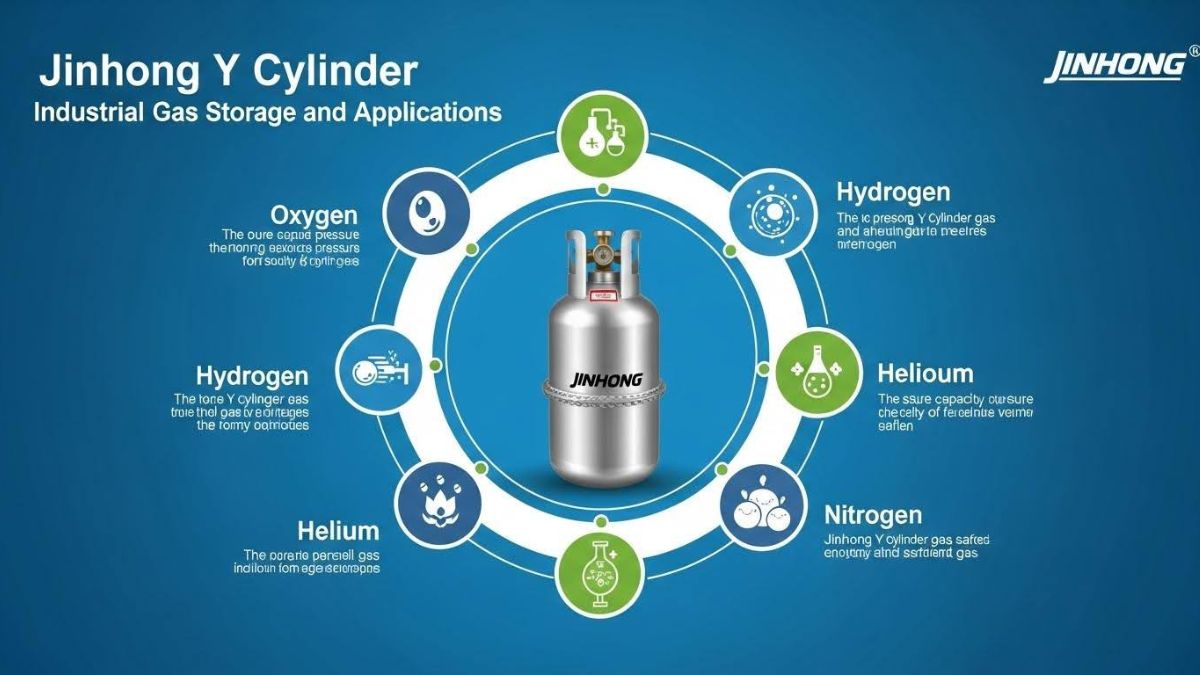TOPIC
Living in San Jose: Things to Know & Places to Explore

San Jose, often known as the heart of Silicon Valley, is a city that combines the innovation of technology with the charm of California living. Whether you’re considering moving to this vibrant city or just curious about what it’s like to call San Jose home, you’ve come to the right place. Here, we’ll explore everything from the local lifestyle to the must-see spots in and around the city. Let’s dive into what living in San Jose is all about!
A Glimpse of San Jose
Before we explore the details, let’s take a quick look at why San Jose is such an appealing place to live. As the third-largest city in California, San Jose boasts a unique blend of urban sophistication and scenic beauty.
It’s home to tech giants, diverse neighborhoods, and a range of cultural activities. The city’s mild Mediterranean climate, coupled with its booming tech industry, makes it a popular destination for people from all walks of life.
Whether you’re a tech professional, a family, or a young individual looking for adventure, San Jose has something special for you.
The Weather in San Jose
When it comes to weather, living in San Jose is a dream for those who enjoy sunshine without the extreme heat. The city experiences a Mediterranean climate, characterized by warm summers and mild winters. Temperatures can rise into the 80s and 90s during the summer months, while winter temperatures typically hover in the 40s and 50s. Rain is fairly minimal, and snow is practically unheard of.
This means that you can enjoy outdoor activities year-round, whether it’s hiking in nearby parks or strolling through downtown San Jose.
A Hub for Innovation and Tech
San Jose is famously the epicenter of Silicon Valley, home to tech giants like Adobe, Cisco, and eBay. The city is synonymous with innovation and entrepreneurship, making it a hotspot for professionals in the tech industry. If you’re a software engineer, developer, or data scientist, moving to San Jose could open up doors to exciting career opportunities.
Even if you’re not directly working in tech, the culture of innovation and progress permeates throughout the city, providing a sense of forward-thinking and opportunity. From world-class networking events to professional development workshops, San Jose is constantly buzzing with ideas and people striving to change the world.
Neighborhoods to Explore in San Jose
One of the best parts about living in San Jose is the variety of neighborhoods, each offering a distinct vibe and set of amenities. Let’s take a look at a few of the most popular neighborhoods in the city.
Downtown San Jose
If you love the hustle and bustle of city life, Downtown San Jose is the place to be. With a variety of high-rise apartments and condos, it’s perfect for those who want to be in the middle of the action. This area is filled with dining options, entertainment venues, and cultural landmarks, including the Tech Museum of Innovation and the San Jose Museum of Art. It’s also home to a vibrant nightlife scene, with plenty of bars and clubs to choose from.
Willow Glen
For a more suburban feel, Willow Glen is a charming neighborhood with tree-lined streets, boutique shops, and cozy cafes. Known for its strong sense of community, Willow Glen offers a more relaxed pace of life compared to downtown but is still close to all the city amenities. It’s ideal for families or anyone looking for a quieter area that’s still close to the tech hubs of Silicon Valley.
Rose Garden
If you love greenery and history, the Rose Garden neighborhood might be a perfect fit. Known for its beautiful rose garden (of course!), this area features stunning historic homes and quiet streets. It’s an older, more established neighborhood that exudes charm and character. Plus, you’ll be close to parks, and San Jose State University, and you can explore local markets and small businesses.
Almaden Valley
Located in the southern part of San Jose, Almaden Valley is known for its spacious homes and excellent schools. The area is more residential and suburban, with plenty of parks and outdoor spaces for families to enjoy. It’s a bit farther from the tech industry hotspots but offers a peaceful escape from the hustle and bustle.
The Cost of Living in San Jose
One of the realities of living in San Jose is the high cost of living. As a hub for tech professionals, the demand for housing is high, which drives up prices. Whether you’re renting an apartment or looking to buy a home, you’ll find that real estate prices in San Jose are among the highest in the nation.
- Utilities: Around $150–$250/month.
- Transportation: Gas costs $4–$5/gallon.
- Food: Groceries like milk are about $3.50/gallon.
- Healthcare: Insurance premiums $400–$1,200/month.
Housing and Rent
As mentioned, the housing market in San Jose can be expensive. The average price for a single-family home is considerably higher than the national average. Renters will also find that rent prices for apartments and houses are on the pricier side, especially in the more desirable neighborhoods like Willow Glen or Downtown San Jose.
- Housing: Rent is $2,500–$3,000/month.
Things to Do in San Jose
While living in San Jose offers plenty of career opportunities, it also boasts a wide range of activities for residents to enjoy. Whether you’re a foodie, nature lover, or sports fan, you’ll find something to suit your interests. Here are some of the best things to do in the city:
Explore the Great Outdoors
With its mild climate, San Jose offers many opportunities to get outdoors. Visit the beautiful Los Gatos Creek Trail for a hike or bike ride, or head to Almaden Quicksilver County Park for a more rugged nature experience. For those who love picnicking or leisurely walks, the Municipal Rose Garden is a must-visit spot.
Visit the Tech Museum of Innovation
San Jose’s Tech Museum of Innovation is a great place for anyone fascinated by the world of technology. The museum is filled with hands-on exhibits and educational experiences that are fun for all ages. It’s the perfect spot for tech enthusiasts, families, and anyone curious about the future.
Enjoy the Food Scene
San Jose is a haven for foodies, offering everything from high-end restaurants to casual eateries. If you’re a fan of international cuisine, you’ll love exploring the city’s variety of options. Be sure to check out the San Pedro Square Market for delicious local food, or head to Little Saigon for Vietnamese dishes.
Moving to San Jose
Moving to a new city can be a big adjustment, and San Jose is no exception. To help make your transition smoother, consider these tips:
- Plan Your Move Early: San Jose is a competitive housing market, so give yourself plenty of time to find the perfect place.
- Hire Professional Movers: Finding a reliable moving company in San Jose can save you time and effort. Professionals will know the area well and can help with everything from packing to unloading.
- Network and Get Involved: San Jose has a thriving tech scene, but it also offers opportunities for socializing and getting involved in local events. Attend meetups or volunteer with local organizations to build connections and integrate into the community.
Living in San Jose offers a unique combination of career opportunities, a beautiful climate, and a dynamic cultural scene. Whether you’re relocating for work, family, or lifestyle, this vibrant city has something to offer everyone. With the right planning and an adventurous spirit, living in San Jose could be the perfect next chapter in your life.
TOPIC
Exploring the Jinhong Y Cylinder: Industrial Gas Storage and Applications

In industrial and laboratory environments, the need for reliable gas storage solutions is crucial. Among the many formats available, the Jinhong Y cylinder stands out as a high-capacity, high-pressure gas container designed for efficient storage and transport of specialty gases. With an emphasis on purity, performance, and safety, Y cylinders are trusted by industries ranging from semiconductors and laboratories to petrochemical plants and aerospace operations.
This article takes a deep dive into the design, specifications, applications, and advantages of the Jinhong Y cylinder, while also shedding light on the broader offerings of Jinhong, a global player in the specialty gas and cylinder market.
What Is a Y Cylinder?
A Y cylinder—sometimes referred to as a “ton container” or “T cylinder”—is a large, horizontal gas cylinder used to store and transport gases in bulk, especially under high pressure. These cylinders are ideal for gases that are either costly or consumed in large volumes, such as:
- Sulfur hexafluoride (SF₆)
- Silane (SiH₄)
- Ammonia (NH₃)
- Chlorine (Cl₂)
- Hydrogen chloride (HCl)
Y cylinders are constructed using high-strength steel or other reinforced materials and come equipped with pressure relief valves, gas-specific valve types, and neck threads tailored to the properties of the stored gas.
Dimensions and Specifications of Y Cylinders
Though specifications may vary slightly by manufacturer, Jinhong’s Y cylinders typically follow global standards for gas container design. Here are some standard specifications:
| Specification | Typical Value |
| Water Capacity | 49.5 – 52.5 liters |
| Working Pressure | Up to 150 bar (depending on gas) |
| Material | Seamless steel |
| Cylinder Orientation | Horizontal |
| Cylinder Weight | ~90 – 110 kg (empty) |
| Certification Standards | ISO9809, DOT, TPED, GB, etc. |
These cylinders are built to resist corrosion, handle hazardous contents, and ensure long-term durability under demanding industrial conditions.
Why Choose the Jinhong Y Cylinder?
Jinhong, a trusted name in the specialty gas industry, has a reputation for producing high-quality gas cylinders and supplying ultra-high purity gases to global markets. Their Y cylinders stand out due to the following reasons:
1. High Storage Capacity
Compared to standard industrial cylinders, Y cylinders provide significantly more gas per unit, reducing the frequency of cylinder changes and minimizing downtime.
2. Safety Compliance
Every Jinhong Y cylinder complies with international safety codes, ensuring that gases are safely stored and transported. From valve compatibility to explosion-proof construction, these cylinders are designed for handling toxic, corrosive, or flammable gases.
3. Versatility Across Industries
Whether it’s used in a semiconductor cleanroom or a chemical processing facility, the Y cylinder can handle diverse gases without compromising purity or safety.
4. Customization Options
Jinhong offers a range of customizable features for its Y cylinders, including:
- Valve type (Diaphragm, Ball, Needle)
- Gas purity levels
- Color-coded coatings
- Stamped serial numbers for traceability
Industrial Applications of Y Cylinders
Y cylinders are essential in sectors where gas consumption is high and continuous. Let’s explore their role across a few industries:
Semiconductor Industry
Gases like silane (SiH₄), ammonia (NH₃), and hydrogen chloride (HCl) are delivered in Y cylinders to semiconductor fabs. Their large volume capacity ensures consistent feedstock supply for chemical vapor deposition (CVD) and etching processes.
Chemical Manufacturing
In chemical synthesis and polymer production, bulk gases are used in continuous-flow reactors. Y cylinders reduce gas replacement frequency and ensure stable operations.
Power and Utilities
Sulfur hexafluoride (SF₆) is a common gas used for insulation in high-voltage switchgear. SF₆ is often stored in Y cylinders due to the quantity required for substations and grid systems.
Metallurgy and Welding
Some specialty gases used in high-end alloy processing and thermal spray coatings are stored in Y cylinders to maintain purity and minimize contamination risks.
Jinhong: Beyond Cylinders
Jinhong isn’t just a cylinder manufacturer—it’s a global supplier of industrial and specialty gases. From argon to acetylene, Jinhong provides gases for welding, medical, research, and semiconductor sectors.
Interested in pricing on one of Jinhong’s most popular gases? You can explore cost breakdowns for commonly used products like argon here: Jinhong
This pricing insight is helpful whether you’re sourcing gases in bulk or planning an industrial-scale project.
Maintenance and Safety Tips
Proper handling and maintenance of Y cylinders are essential to avoid hazardous situations:
- Store upright in well-ventilated areas
- Use regulators and fittings specific to the gas type
- Perform leak checks before each use
- Never attempt to refill or modify cylinders without professional certification
- Always follow SDS (Safety Data Sheet) instructions for each gas
Jinhong provides comprehensive safety documentation and training resources for all its products, including Y cylinders and the gases they carry.
Cost Considerations
While Y cylinders require a higher upfront cost compared to standard cylinders, they offer better cost-efficiency over time due to:
- Fewer cylinder changes
- Reduced shipping and handling
- Lower downtime in continuous processes
In bulk supply scenarios or semiconductor facilities, Y cylinders can lead to significant cost savings when calculated on a per-liter or per-gram gas usage basis.
Global Standards and Certification
Jinhong’s cylinders conform to key international standards, including:
- ISO 9809 for seamless steel cylinders
- DOT/TC certification for U.S. and Canadian markets
- TPED/ADR compliance for Europe
- GB standards for China
This makes them an ideal choice for companies operating in regulated industries and across global markets.
Conclusion
The Jinhong Y cylinder represents a critical innovation in industrial gas storage, offering bulk capacity, high-pressure tolerance, and unmatched safety. Whether you’re in semiconductor fabrication, chemical processing, or energy infrastructure, this cylinder format is built to support high-performance applications while ensuring operational efficiency.
Jinhong’s commitment to quality, global distribution, and innovation in specialty gases has made them a go-to supplier for businesses around the world. If you’re looking to invest in reliable, certified, and high-capacity gas storage, the Y cylinder may be exactly what your operation needs.
TOPIC
Can You File a Claim If Road Conditions Caused Your Motorcycle Crash?

Motorcycle crashes impact lives. When poor road conditions cause these accidents, you may wonder about filing a claim. Understanding your rights helps you make informed decisions. Bad roads, such as those with potholes or debris, present unique challenges for riders. These hazards can lead to devastating outcomes. You may think, “Who is responsible?” That’s a fair question. State or local governments often manage road upkeep. If they neglect maintenance, they might be accountable. But proving this requires evidence and expertise. Consulting experienced professionals is crucial. Groth Law Accident Injury Attorneys is a trusted resource in such situations. They guide you through the legal process. Gathering evidence, such as photos or witness testimonies, strengthens your case. Awareness of these steps can protect your future. You deserve justice when harmed due to someone else’s negligence. Understand your options. Knowledge empowers you to seek rightful compensation. Let’s uncover what action you can take.
Your Legal Rights and Responsibilities
When faced with a motorcycle crash caused by poor road conditions, knowing your rights is the first step toward resolution. Do you have a claim? Yes, if negligence on the part of road maintenance entities contributed to the crash. It’s critical to determine if the government is responsible for the road’s condition. Understanding regulations helps you establish a claim. For instance, Federal Highway Administration provides guidelines on road maintenance. Knowing these can help you understand where negligence occurred.
Proving Negligence in Motorcycle Crashes
To succeed in a claim, you must prove negligence. This involves showing that the responsible party knew or should have known about the hazard. Gathering evidence is essential. You need clear proof that links the road condition to your crash. Photos, reports, and witness statements play a vital role. Document everything, including the location, time, and specific conditions of the road. These details create a strong foundation for your claim.
Steps to File a Claim
Filing a claim involves several steps. First, report the accident to authorities. Accurate police reports can aid your case. Then, seek medical attention. Health records not only ensure your well-being but also serve as evidence of your injuries. Afterward, consult legal experts. They guide you through the intricate legal process. Experts can help you notify the responsible government entity of your intent to file a claim. It’s important to meet all legal deadlines, as missing them can jeopardize your case.
Understanding Liability
Determining liability in these cases can be complex. The table below outlines possible responsible parties and their typical maintenance duties:
| Responsible Party | Typical Maintenance Duties | When Liability May Apply |
| Local Governments | Maintain city streets | When city roads are neglected |
| State Governments | Maintain highways | When highways have hazards |
| Federal Agencies | Oversee federal routes | When federal routes are unsafe |
Importance of Expert Guidance
Expert guidance is invaluable. Legal professionals understand the nuances of such claims. They assess your situation and offer advice tailored to your needs. With their help, you can navigate the complexities of the legal system. This support can be a significant relief, ensuring your rights are protected.
Taking Action
Act promptly. Time matters in these cases. Evidence can disappear, and legal deadlines can pass quickly. By acting swiftly, you preserve your rights and enhance your chances of success. Stay informed and proactive throughout the process. Your diligence can make a substantial difference in the outcome.
Conclusion
Motorcycle crashes are life-altering events. When poor road conditions cause these incidents, you have the right to seek justice. Proving negligence requires careful documentation and expert assistance. By understanding your rights and taking informed steps, you can pursue rightful compensation. Remember, you are not alone. There are resources and professionals ready to guide you through this challenging time. Your well-being and future matter. Take control and act today.
TOPIC
A Kidnapping Private Detective Shares 8 of the Top Reasons Kidnappers Choose to Kidnap Others

Kidnapping is a terrifying crime that can happen to anyone. Children and adults are often targeted. It is necessary to communicate with private investigators in OKC and process servers near me who have worked on multiple kidnapping cases. Their knowledge about kidnapping cases reveals the top hidden reasons for kidnappers. These expert professionals play an important role in solving complex cases like this.
The top 8 reasons kidnappers choose to kidnap others and how process servers in OKC and private investigators in OKC help victims seek justice are explained in this blog.
1. Ransom Money
Money is seen as the most common reason behind kidnapping. Kidnappers often target those who belong to wealthy families and business backgrounds, so they can have a large amount of money from the victims’ families. Private investigators in Oklahoma City are experts in tracking them and getting in communication to work with law enforcement for victims.
2. Personal Revenge
Kidnappers often kidnap people for personal conflicts instead of money. In such cases, people take revenge on others. It can be a partner, close friend or even a colleague. A private investigator in OKC can collect evidence and uncover the truth for justice.
3. Custody Battles
Sometimes, one parent can kidnap their child because of a custody battle, and it is known as parental kidnapping. These situations can be complicated if parents take their child outside the state. In such a situation, private investigators in Oklahoma work closely with high authorities to track kidnappers and return the child safely.
4. Human Trafficking
Human trafficking has been a major issue in the U.S., including in Oklahoma. Traffickers kidnap individuals and force them into exploitation. Quick responses from a process server in Oklahoma City can make all the difference and avoid court cases.
5. Mental Illness or Delusion
Not every kidnapper has a logic behind kidnapping. Some kidnappers have mental illnesses, and they believe it is a way to earn money from people who do not belong to them. These cases are extremely difficult and cannot be solved without the help of investigators near me who can handle complex situations.
6. Jealousy or Obsession
People who are jealous and obsessed kidnap others to gain control over them. A skilled private investigator and process server in OKC works with law enforcement to protect victims and uncover the truth.
7. Coercion or Leverage
People often kidnap others to pressure them. For example, a criminal kidnaps a business owner to get assets from them. In such high-profile cases, a process server in OK delivers legal documents to deal with the kidnappers and support victims.
8. Random Opportunity or Mistake
Some kidnappings are not planned. Some happen due to mistaken identities. Process servers and private investigators in Oklahoma City can interview witnesses and help with identifying the suspect.
Conclusion
People often get upset and emotional when they face the kidnapping of their loved ones. In such a complicated situation, it is necessary to find private investigators in OKC and a process server in Oklahoma who have experience in solving complex cases. These professionals are familiar with Oklahoma laws and work efficiently to gather evidence.
If you are searching for private investigators and process servers near me, it means you have trust in them that their services are reliable and supportable for their clients who hire them. The right team can help you everywhere, whether it’s a court matter, a child custody battle or a kidnapping case.
-

 BLOG1 year ago
BLOG1 year agoATFBooru: A Hub for Animated Art and Community
-

 CONSTRUCTION1 year ago
CONSTRUCTION1 year agoBuilding a Home Gym in Your Basement (7 Key Renovation Tips)
-

 BLOG1 year ago
BLOG1 year agoFictionmania: A Deep Dive into the World of Transformative Stories
-

 GAMES1 year ago
GAMES1 year agoSnow Rider 3D: Unblocked Tips and Tricks for Gamers
-

 BLOG12 months ago
BLOG12 months agoGIFHQ: A Comprehensive Guide
-

 BLOG1 year ago
BLOG1 year agoVincent herbert new wife: A Detailed Overview
-

 BUSINESS1 year ago
BUSINESS1 year agoInvestiit.com Tips: A Comprehensive Guide for Smart Investing
-

 LIFESTYLE11 months ago
LIFESTYLE11 months agoAchieve Elegance with Chic Blue Formal Dresses and Redken Professional Hair Care for All Hair Types
